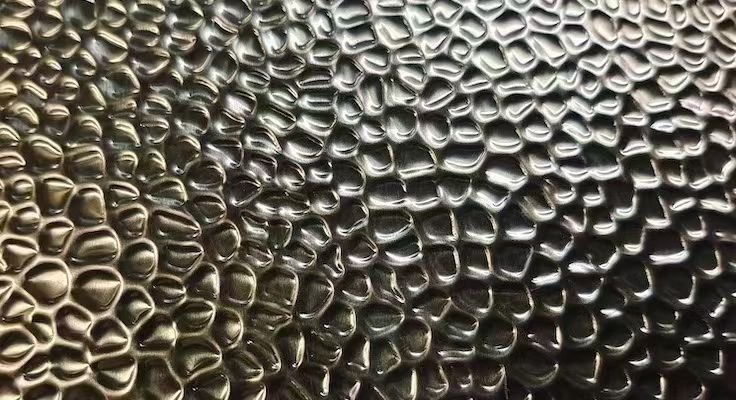
Innovations in Stainless Steel Manufacturing
Introduction
The stainless steel industry has always been at the forefront of innovation, driven by the need to meet increasing demands for high-quality, efficient, and sustainable materials. Recent advancements in production techniques and technologies have significantly enhanced the performance and environmental impact of stainless steel products. This article explores the latest innovations in stainless steel manufacturing and their implications for product quality, efficiency, and sustainability.
Advancements in Production Techniques
Laser Welding and Cutting
Laser technology has revolutionized stainless steel manufacturing, offering precise and efficient welding and cutting solutions. Laser welding ensures clean and strong joints with minimal heat distortion, which is crucial for maintaining the integrity of stainless steel structures. Laser cutting, on the other hand, provides high precision and speed, allowing for intricate designs and reducing material wastage.
Additive Manufacturing (3D Printing)
Additive manufacturing, or 3D printing, is another groundbreaking innovation in the stainless steel industry. This technology enables the creation of complex geometries that were previously impossible with traditional manufacturing methods. 3D printing offers significant advantages in terms of material efficiency, as it uses only the necessary amount of material to build a component layer by layer. This not only reduces waste but also allows for the production of custom parts on demand.
Advanced Metallurgy
The development of new stainless steel alloys with enhanced properties is a testament to the advances in metallurgy. These new alloys are designed to offer improved corrosion resistance, mechanical strength, and durability. For instance, duplex stainless steels, which combine the characteristics of austenitic and ferritic stainless steels, provide exceptional resistance to stress corrosion cracking and are increasingly used in demanding applications such as chemical processing and offshore structures.
Automation and Robotics
Automation and robotics have become integral to modern stainless steel manufacturing processes. Automated systems and robotic arms ensure consistent quality, increase production speed, and reduce the risk of human error. These technologies are particularly beneficial in repetitive and hazardous tasks, enhancing workplace safety and efficiency.

Improving Product Quality
Precision and Consistency
The advancements in laser technology, additive manufacturing, and automation have led to unparalleled precision and consistency in stainless steel products. High-precision laser cutting and welding ensure that components meet exact specifications, reducing the need for post-production adjustments. This level of precision is essential for industries such as aerospace and medical devices, where even the smallest deviations can have significant consequences.
Enhanced Material Properties
The development of advanced alloys has resulted in stainless steel products with superior material properties. These alloys offer improved strength, ductility, and resistance to extreme conditions. For example, super duplex stainless steels are known for their outstanding corrosion resistance and mechanical properties, making them ideal for use in harsh environments such as oil and gas exploration.
Surface Finishes
Innovations in surface treatment technologies have also improved the quality and aesthetics of stainless steel products. Techniques such as electro-polishing, passivation, and advanced coating methods enhance the corrosion resistance, hygiene, and appearance of stainless steel surfaces. These finishes are particularly important in industries like food processing, pharmaceuticals, and architecture, where both functionality and appearance are critical.
Enhancing Efficiency
Reduced Production Time
Automation and advanced manufacturing techniques have significantly reduced production times in the stainless steel industry. Robotic systems can operate continuously, performing repetitive tasks with high precision and speed. This not only increases output but also allows for shorter lead times, enabling manufacturers to respond quickly to market demands.
Material Efficiency
Additive manufacturing and precision cutting technologies have greatly improved material efficiency. By using only the necessary amount of material and minimizing waste, these technologies contribute to cost savings and resource conservation. This is especially important in industries where the cost of raw materials can be a significant factor.
Energy Efficiency
Modern stainless steel manufacturing processes are designed to be more energy-efficient. Innovations such as induction heating, energy recovery systems, and optimized furnace designs reduce energy consumption during production. These measures not only lower operational costs but also contribute to the overall sustainability of the manufacturing process.
Sustainability in Stainless Steel Manufacturing
Recycling and Reuse
Stainless steel is inherently sustainable due to its recyclability. The industry has made significant strides in increasing the recycling rates of stainless steel products. Advanced sorting and recycling technologies ensure that scrap stainless steel is efficiently processed and reused in new production, reducing the need for virgin materials and conserving natural resources.
Environmental Impact Reduction
Innovations in production techniques have also focused on reducing the environmental impact of stainless steel manufacturing. Processes that minimize emissions, waste, and water usage are increasingly being adopted. For example, modern smelting techniques have significantly lowered greenhouse gas emissions, contributing to cleaner production.
Green Certifications and Standards
The adoption of green certifications and standards is another step towards sustainable stainless steel manufacturing. Certifications such as ISO 14001 (Environmental Management) and LEED (Leadership in Energy and Environmental Design) ensure that manufacturing processes meet stringent environmental criteria. These certifications not only demonstrate a commitment to sustainability but also enhance the reputation of manufacturers in the global market.
Conclusion
The stainless steel industry continues to evolve with innovations that improve product quality, efficiency, and sustainability. From laser technology and additive manufacturing to advanced alloys and automation, these advancements are reshaping the way stainless steel products are produced and utilized. As the demand for high-quality, efficient, and sustainable materials grows, the ongoing innovations in stainless steel manufacturing will play a crucial role in meeting these needs and driving the industry forward.


